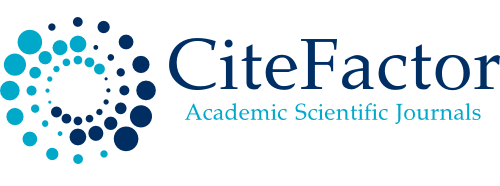Understanding Students Characteristics of Graduates in Biological Education Department (A Case Study Done in Muhammadiyah University Prof. Dr. Hamka)
DOI:
https://doi.org/10.61841/cxg6p823Keywords:
Characteristics of Graduates,, Biology Teacher Education, Ability of Scientific Method, Experiment StudiesAbstract
The main purpose of this study was to understand the ability of students to conduct experiments in Biology education programs with different educational backgrounds. Descriptive method with quantitative approach was used to analyze data inductively. Determination of the sample with a purposive technique, namely as many as 37 students who took the general Biology course in the 2018/2019 academic year. The results showed that the ability to carry out experimental studies of Biology teacher candidates was 97.6% with an excellent category.There are four aspects of carrying out the experimental study skills analyzed, namely: 1) determining the tools and materials, 2) grouping the data, 3) drawing conclusions, and 4) describing the results of the study. Rating with the lowest score is the skill to describe the results of the study. The ability to carry out experiments is an important part of the scientific method, which in the learning process is used to find concepts, theories or scientific facts through a series of stages of the scientific method such as a scientist in Biology education.
Downloads
References
1. Abbas, A. (2018). Pendidikan di Indonesia Pada Masa Jepang. Ash-Shahabah: Jurnal Pendidikan Studi Islam, 4(1), 64–70.
2. Abdurrahman, D., Willison, J, & Sabir, F. (2017). International postgraduate students’ perception of the research skill development framework. In National Conference on Teachers’ Professional Conference, 1, 77–81.
3. Aslan. (2018). Dinamika Pendidikan Islam DI Zaman Penjajahan Belanda. Syamil, 6(1), 39–50.
4. Azra, A. (2013). Islamisasi Jawa. Studi Islamika, 20(1), 169–177.
5. --. (2013). Jaringan Ulama Timur Tengah dan Kepulauan Nusantara Abad XVII & XVIII. Prenada
Media.
6. Beck, R. J., Skinner, W. F, & Schwabrow, L. A. (2013). A study of sustainable assessment theory in higher education tutorials. Assessment & Evaluation in Higher Education, 38(3), 326–348.
7. Biyanto. (2010). Muhammadiyah dan Problema Hubungan Agama-Budaya. ISLAMICA, 5(1), 88–99.
8. Buehl, D. (2017). Classroom strategies for interactive learning. Stenhouse Publishers.
9. Bundu, P. (2006). Penilaian Keterampilan Proses dan Sikap Ilmiah Dalam Pembelajaran Sains Sekolah Dasar. Depdiknas.
10. Chiappetta, E. ugene L., & Koballa, T. R. (2010). Science Instruction in The Middle and Secondary School Developing Fundamental Knowledge and Skills. Person.
11. Crowe, A., Dirks C, & Wenderoth, M. P. (2008). Biology in bloom: Implementing Bloom’s taxonomy to enhance student learning in biology. CBE—Life Sciences Education, 7(4), 368–381.
12. Davidson, C. N. (2017). The new education: How to revolutionize the university to prepare students for a world in flux. Hachette UK.
13. Drew, G. (2010). Issues and challenges in higher education leadership: Engaging for change. The Australian educational researcher, 37(3), 57–76.
14. Hafsah. (2014). Pendidikan Islam Di Indonesia (Studi Pemberdayaan Madrasah). Risalah: Jurnal Pendidikan dan Studi Islam Fakultas Agama Islam Universitas Wiralodra, 1(1), 29–35.
15. Hasnida. (2017). Sejarah Perkembangan Pendidikan Islam di Indonesia Pada Masa Pra Kolonialisme dan Masa Kolonialisme (Belanda, Jepang, Sekutu). KORDINAT, XVI(2), 237–256.
16. Juanda, A. (2015). Profesionalisme Mahasiswa Biologi Mengintegrasikan Pelajaran Biologi Dengan Agama Islam. SCIENTIAE EDUCATIA, 5(1), 1–12.
17. Kartikawati, E. (2019). Analisis Kemampuan Metode Ilmiah dalam Membuat Laporan Penelitian Mahasiswa Pendidikan Biologi Universitas Muhammadiyah Prof. Dr. Hamka. Syntax Literate :Jurnal Ilmiah Indonesia, 4(10), 27–33.
18. Khoiriyah, R. (2017). Revitalisasi Pendidikan Islam Dalam Perspektif Kiai Hasyim Asy’ari. Jurnal Islam Nusantara, 01(02), 156–170.
19. Lapidus, I. M. (1991). A History of Islamic Societes. Cambridge University Press.
20. M. Shabir U. (2013). Kebijakan Pemerintah dan Pengaruhnya Terhadap Pendidikan Islam di Indonesia. Lentera Pendidikan, 16(2), 166–177.
21. Majelis Diktilitbang Muhammadiyah. (2013). UNIVERSITAS MUHAMMADIYAH PROF. DR. HAMKA (UHAMKA). http://diktilitbangmuhammadiyah.org/id/universitas-muhammadiyah-prof-dr- hamka-uhamka/
22. Marfita, S. N, & Purwana, U. (2019). Upaya Meningkatkan Kemampuan Siswa SMA dalam Melakukan Percobaan melalui Model Pembelajaran Problem Solving Laboratory pada Materi Elastisitas. Jurnal Wahana Pendidikan Fisika, 4(1), 63–68.
23. Muttaqin, Muh. Z. H., Amin, M., & Zubaidah, S. (2016). Pengembangan Buku Referensi Bioetika Jurusan Pendidikan IPA Biologi IAIN Mataram. BIOTA: Jurnal Tadris IPA Biologi FITK IAIN Mataram, VIII(I), 1–17.
24. Nasution, N. F. (2016). Pengaruh Model Predict-Observe-Explain ( Poe ) Melalui Metode Eksperimen Terhadap Keterampilan Proses Sains. 3(3), 18–24.
25. Nirwana, H. D., Haryani, S, & Susilogati, S. (2017). Penerapan Praktikumberbasis Masalah Untuk Meningkatkan Keterampilan Proses Sains Siswa. Jurnal Inovasi Pendidikan Kimia, 10(2), 1788–1797.
26. Rahmat. (2014). Madrasah Sebagai Lembaga Pendidikan Islam (Sistem dan Perkembangannya Sebelum dan Sesudah Kemerdekaan). Jurnal Rihlah, 1(2), 53–68.
27. Razali, Uliyanti, E, & Syamsiati. (2015). Peningkatan hasil belajar siswa pada pembelajaran IPA menggunakan metode inkuiri di sekolah dasar. Jurnal Pendidikan Dan Pembelajaran UNTAN, 4(12), 1– 13.
28. Richard, J. D. (2001). Scientific Methods an Online Book. Dept. Of Geology and Geophysics. University of Utah.
29. Rohman, M. (2018). Kebijakan Pendidikan Islam Masa Penjajahan Jepang. Al-Hikmah: Jurnal Pendidikan Agama Islam, 02(01), 15–33.
30. Sabarudin, M. (2015). Pola dan Kebijakan Pendidikan Islam Masa Awal dan Sebelum Kemerdekaan. Jurnal Tarbiya, 1(1), 139–174.
31. Saepuzaman, D., & Yustiandi, Y. (2017). Pengembangan Alat Peraga dan Lembar Kerja Percobaan Penentuan Koefisien Restitusi untuk Meningkatkan Kemampuan Siswa Bereksperimen. Jurnal Penelitian & Pengembangan Pendidikan Fisika, 3(2), 145–150. https://doi.org/10.21009/1.03204
32. Satrio. (2018). Urgensi Penguasaan Bahasa Arab Dalam Studi Islam di Indonesia. Perada: Jurnal Studi Islam Kawasan Melayu, 1(2), 163–177.
33. St. Hadidjah. (2007). Kontribusi Pendudukan Jepang Bagi Persatuan Umat Islam di Indonesia. Jurnal Hunafa, 4(2), 143–154.
34. Steenbrink, K. A. (1994). Pesantren Madrasah Sekolah: Pendidikan Islam Dalam Kurun Modern, terj. Karel A. Steenbrink dan Abdurrahman (Cetakan II). LP3ES.
35. Tanjung, I. F. (2016). Guru dan Strategi Inkuiri Dalam Pembelajaran Biologi. JURNAL TARBIYAH, 23(1), 64–82.
36. Teddlie, C, & Yu, F. (2007). Mixed methods sampling: A typology with examples. Journal of mixed methods research, 1(1), 77–100.
37. Tendi. (2018). Propoganda Terhadap Umat Islam di Zaman Jepang, 1942-1945. Tamaddun, 6(1), 56–82.
38. Tirolian, T. (2016). Kolonialisme dan Dikotomi Pendidikan Islam di Indonesia. Ihya al-Arabiyah: Jurnal Pendidikan Bahasa dan Sastra Arab, 2(2).
39. Wardianti, Y., & Jayati, R. D. (2018). Validitas Modul Biologi Berbasis Kearifan Lokal. Jurnal Pendidikan Biologi dan Sains (BIOEDUSAINS), 1(2), 136–142.
40. Ziliwu, D. (2019). Pembelajaran Biologi Dengan Metode Flip Chart. Jurnal Warta, 1–15.
41. Zuhairini. (2011). Sejarah Pendidikan Islam. Bumi Aksara.
Downloads
Published
Issue
Section
License

This work is licensed under a Creative Commons Attribution 4.0 International License.
You are free to:
- Share — copy and redistribute the material in any medium or format for any purpose, even commercially.
- Adapt — remix, transform, and build upon the material for any purpose, even commercially.
- The licensor cannot revoke these freedoms as long as you follow the license terms.
Under the following terms:
- Attribution — You must give appropriate credit , provide a link to the license, and indicate if changes were made . You may do so in any reasonable manner, but not in any way that suggests the licensor endorses you or your use.
- No additional restrictions — You may not apply legal terms or technological measures that legally restrict others from doing anything the license permits.
Notices:
You do not have to comply with the license for elements of the material in the public domain or where your use is permitted by an applicable exception or limitation .
No warranties are given. The license may not give you all of the permissions necessary for your intended use. For example, other rights such as publicity, privacy, or moral rights may limit how you use the material.









